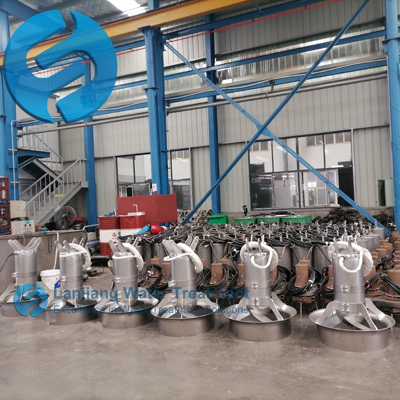The power consumption of sewage treatment equipment depends on many factors, including the treatment scale, treatment process, equipment type and operation mode. Generally speaking, the power consumption of sewage treatment equipment is relatively large, but the specific value will vary from case to case.

Influencing factors of power consumption
1. Treatment scale: The larger the treatment capacity, the power consumption per ton of water will usually be relatively low, but the total power consumption is still high. Because no matter how much processing capacity, some fixed equipment operation energy consumption is inevitable.
2. Processing process: Different processing processes have different consumption of electric energy. For example, the use of electrolysis to treat industrial wastewater containing a large number of emulsifiers, its power consumption will be relatively high. Although the initial investment of the equipment of biological treatment technology is large, the operation and maintenance cost is low, and the electricity consumption can be effectively reduced.
3. Equipment type: Traditional sewage treatment equipment such as mechanical treatment equipment, its electricity consumption is usually higher. And modern energy-saving equipment, such as frequency conversion pumps, energy-saving aerators, etc., can effectively reduce energy consumption.
4. Operation mode: Continuous operation equipment is more energy efficient than intermittent operation equipment, because intermittent operation equipment will waste more energy during the start and stop process.
5. Water quality factors: the treatment process with high inlet concentration and high effluent requirements will increase energy consumption. Because high concentrations of influent require more treatment steps and equipment, while high effluent requirements may require additional depth treatment or enhanced treatment processes.
Power consumption instance
Taking municipal sewage treatment plants as an example, their electricity consumption per ton of water is generally 0.X kwh/ ton (the specific value varies according to the treatment process and equipment). For treatment plants that treat industrial wastewater, power consumption can be higher, especially when the treatment process is complex or the water quality is poor. Some data show that the power consumption of tons of water under some treatment processes may reach tens of degrees or even tens of degrees.
In addition, some key equipment in the sewage treatment plant, such as aeration tanks and pump equipment, its power consumption accounts for a relatively large proportion of the entire sewage treatment plant. The power consumption of aeration equipment accounts for about 27% of the total electricity, and the power consumption of pump equipment is as much as 40% of the power consumption of the entire sewage treatment plant.
Energy conservation and consumption reduction measures
In order to reduce the power consumption of sewage treatment equipment, a variety of energy-saving measures can be taken, such as:
Use energy-efficient equipment to replace traditional energy-consuming equipment.
Optimize the operation mode to reduce the number of starts and stops.
Strengthen equipment maintenance to ensure that the equipment is in the best running condition.
Implement intelligent control to automatically adjust equipment operating status according to water quality and treatment requirements.
To sum up, the power consumption of sewage treatment equipment is relatively large, but through the adoption of scientific energy-saving measures and reasonable operation management, energy consumption can be effectively reduced and improve the efficiency of treatment.
Post time:2024-09-06